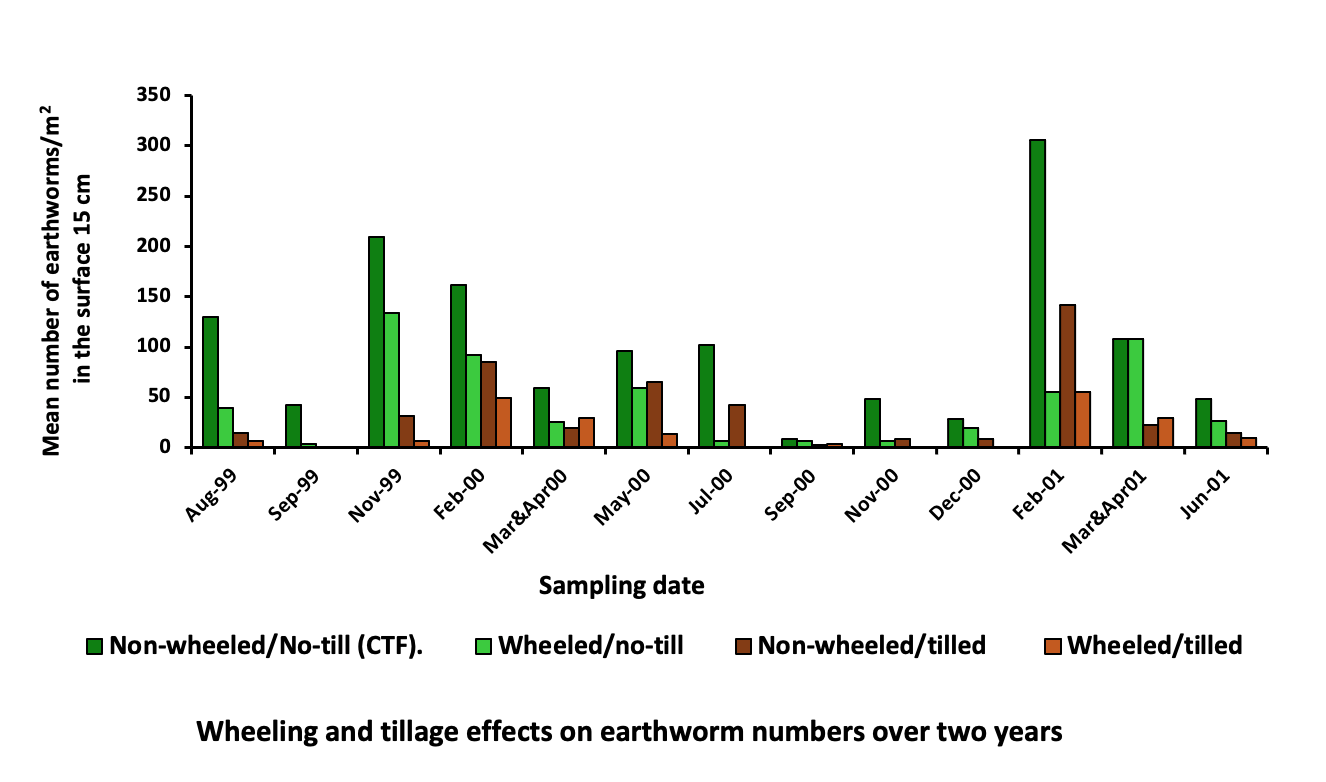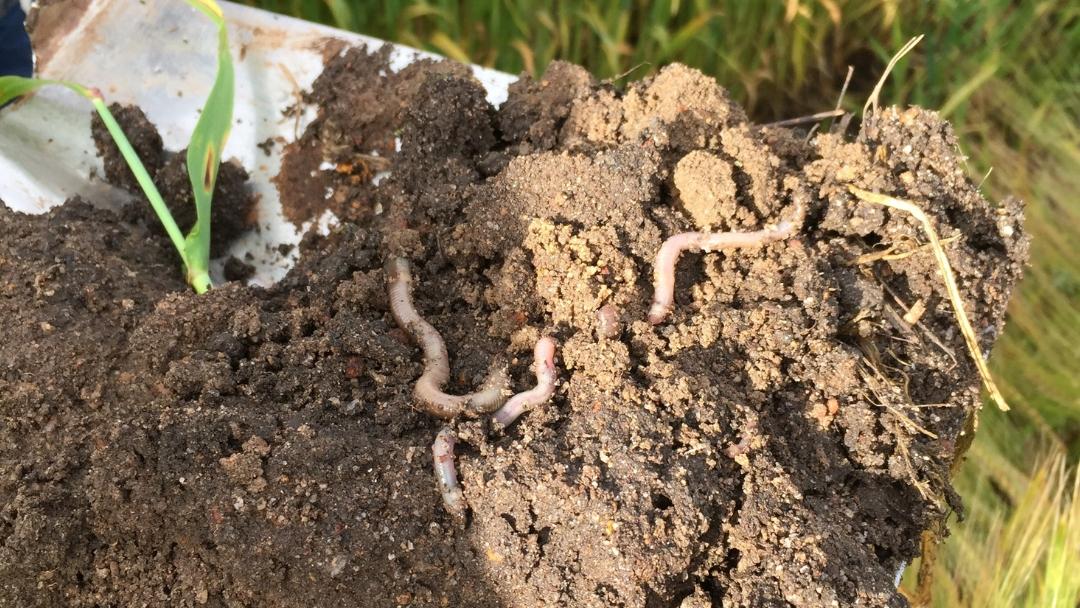IMAGE: Earthworms in CTF, WA. (Credit: Bindi Isbister)
It is generally accepted that CTF should be beneficial for that important but ill-defined property – soil health – for which earthworms are often used as an indicator. The scientific literature on this topic has largely focused on the impact of no-till, although there is widespread anecdotal evidence of the benefits of controlling traffic.
While the work reported here is a bit old, it represents one of very few scientific studies of soil organisms in CTF conditions. The measurements were taken from replicated plots of a black vertosol at Gatton that had been used for rainfall, run-off and crop yield assessments in the 1990s, and consistently managed in either tilled or no-till grain production over 6 years. The treatments were 1. wheeled/tilled; 2. wheeled/no-till; 3. non-wheeled/tilled and 4. non-wheeled/no-till (CTF).
Populations of soil organisms are highly variable and not easy to measure. Three 15 cm auger samples, 15 cm deep were taken from each plot at 6-8 week intervals over almost two years. Each sample was sieved in the field and larger soil aggregates broken up by hand so soil macrofauna (largely earthworms) could be transferred to a separate container and counted. Subsamples were taken to the laboratory where mesofauna (largely mites and springtails), and microfauna (bacteria and fungi) were assessed using standard procedures.
Earthworm results (see graph) clearly demonstrate the benefits of no-till CTF, where the overall mean earthworm count was 115. Wheeled no-till was next (44), followed by non-wheeled no-till, (39) and wheeled, tilled (15). Tillage had a small but significantly greater impact on earthworm numbers than wheeling. The results also showed that earthworm numbers vary with season, largely reflecting the variation in soil moisture content.
Laboratory tests were done to explore how wheel traffic might impact earthworms. Short term application of tractor tyre pressures to a soil-filled cylinder killed no earthworms, but the same pressure applied for 24 h resulted in 50% mortality. It suggested that compaction kills worms by restricting movement or aeration, rather than direct physical impact. Subsequent field checks on earthworm numbers within 30 min of wheeling by a working tractor with the same tyre pressure indicated 50% mortality. Perhaps it is the combination of vertical force and horizontal shear (wheel slip) that kills earthworms? Another interesting observation was the large increase in earthworm numbers that followed the application of additional surface mulch.

Data on soil mesofauna (mites and springtails) generally followed a similar trend to that of earthworms, but effects of wheeling on microfauna (bacteria and fungi) were much smaller. Interestingly the percentage of non-parasitic nematodes was larger in non-wheeled soil which has got to be a good thing for crops.
Earlier work at the same site had already demonstrated that the initial impact of compaction was on the larger soil pores, and that increasing compaction impacted progressively smaller soil pores. Therefore, it is commonsense that greater compaction will impact progressively smaller soil organisms.
We can fairly say that earthworms prefer to not have wheels driving over them.

